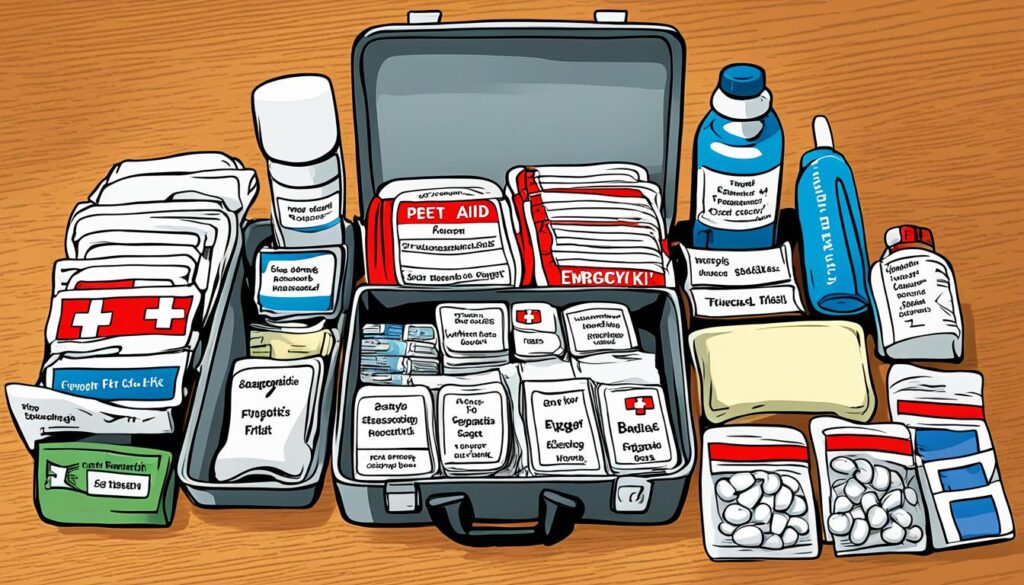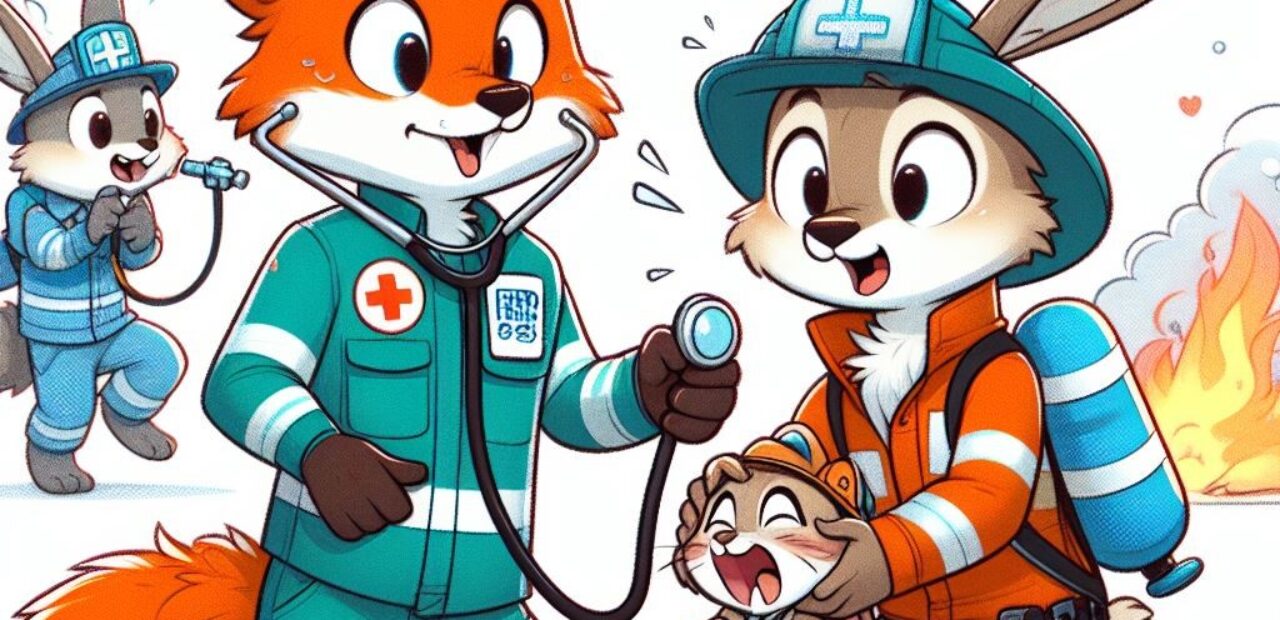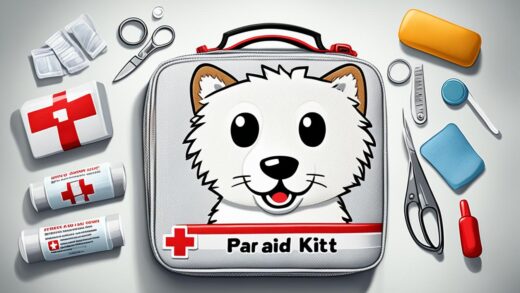Furry First Aid: Handling Emergencies
Did you know that there are approximately 139 million pet cats and dogs in the United States alone? That’s a staggering number of furry friends who rely on their owners for their safety and well-being. As a pet owner, it’s crucial to be prepared for emergencies and know how to administer first aid to your beloved companion.
Key Takeaways:
- Recognize the signs of a pet emergency, such as difficulty breathing, seizures, loss of consciousness, severe bleeding, and choking.
- Create a pet first aid kit with essential supplies like gauze, bandages, antiseptic wipes, tweezers, and medications.
- Learn basic first aid techniques for pets, including CPR, stopping bleeding, treating burns, and handling choking.
- Know when to seek professional help and practice prevention to avoid emergencies.
- Being prepared can make a significant difference in providing immediate care for your furry friend.
Signs of a Pet Emergency
As pet owners, it is crucial to be able to recognize the signs of a pet emergency. Being able to identify these signs can help you take immediate action and potentially save your furry friend’s life. Here are some common signs of a pet emergency:
- Difficulty breathing: If your pet is experiencing difficulty breathing, such as gasping for air, wheezing, or coughing uncontrollably, it is a sign of a serious problem. This can include conditions like asthma, allergic reactions, or obstructions in the airway.
- Seizures: Seizures in pets can manifest as sudden convulsions, loss of consciousness, and involuntary muscle movements. This can be caused by epilepsy, toxins, brain tumors, or other underlying health conditions.
- Sudden loss of consciousness: If your pet suddenly collapses or loses consciousness, it is essential to seek immediate veterinary care. This can indicate a cardiovascular issue, trauma, or other life-threatening conditions.
- Severe bleeding: Excessive bleeding from a wound or any part of your pet’s body should be taken seriously. Apply pressure using a clean cloth or bandage to control the bleeding and seek veterinary assistance promptly.
- Choking: If your pet is choking and struggling to breathe, you may observe pawing at the mouth, difficulty swallowing, or gagging. It is crucial to act quickly to dislodge the obstruction or seek immediate veterinary help.
If you notice any of these pet emergency signs, it is vital to seek immediate veterinary care. Remember, time is of the essence when it comes to saving your pet’s life.
| Pet Emergency Sign | Description |
|---|---|
| Difficulty breathing | Gasping for air, wheezing, or coughing uncontrollably |
| Seizures | Sudden convulsions, loss of consciousness, and involuntary muscle movements |
| Sudden loss of consciousness | Collapsing or losing consciousness without any apparent cause |
| Severe bleeding | Excessive bleeding from a wound or any part of the body |
| Choking | Struggling to breathe, pawing at the mouth, difficulty swallowing |
Creating a Pet First Aid Kit
When it comes to pet emergencies, being prepared is key. One of the most important steps pet owners can take is creating a pet first aid kit. By having essential supplies on hand, you can provide immediate care to your furry friend in the event of an emergency.
Here are some essential items to include in your pet first aid kit:
- Gauze: Used to dress wounds and control bleeding.
- Bandages: Provide support and protection for injuries.
- Antiseptic wipes: Clean wounds and prevent infection.
- Tweezers: Remove splinters, ticks, or other debris from your pet’s skin.
- Medications: Include any prescribed medications your pet may need in case of an emergency.
It’s important to store your pet first aid kit in an easily accessible location, such as a cabinet or drawer. Make sure everyone in your household knows where the kit is kept, so they can quickly locate it during an emergency.
Consider taking a pet first aid course to learn how to use the supplies in your kit and handle emergencies effectively. These courses provide valuable insights and techniques that can make a significant difference in critical situations.
Creating a pet first aid kit is an essential part of preparing for emergencies. It ensures that you have the necessary supplies to provide immediate care to your pet when time is of the essence.
Remember, emergency treatment and first aid for pets should never replace veterinary care. It is always important to seek professional help for your pet’s health and well-being.
| Essential Supplies | Description |
|---|---|
| Gauze | Used to dress wounds and control bleeding. |
| Bandages | Provide support and protection for injuries. |
| Antiseptic wipes | Clean wounds and prevent infection. |
| Tweezers | Remove splinters, ticks, or other debris from your pet’s skin. |
| Medications | Include any prescribed medications your pet may need in case of an emergency. |

Ensure your pet first aid kit is kept up to date by regularly checking expiration dates and replenishing any used or expired supplies. By having a well-stocked and accessible pet first aid kit, you can be better prepared to handle emergencies and provide the necessary care for your beloved pet.
Learning Basic First Aid Techniques for Pets
As a responsible pet owner, it’s crucial to equip yourself with basic first aid techniques for pets. This knowledge can make a significant difference in emergencies and potentially save your furry friend’s life. Some essential techniques to learn include:
- CPR for Pets: Cardiopulmonary resuscitation (CPR) is a vital skill that can help revive a pet whose heart has stopped. By performing chest compressions and rescue breaths, you can restore oxygen flow to their vital organs. It’s important to properly learn the correct technique for CPR on pets, as it differs from CPR on humans.
- Stopping Bleeding: In the event of a cut, wound, or injury causing bleeding in your pet, knowing how to stop it is crucial. Applying direct pressure to the wound with a clean cloth or bandage can help control and minimize bleeding until veterinary care is available. However, it’s important to avoid using tourniquets unless absolutely necessary.
- Treating Burns: Pets can sustain burns from various sources, such as hot surfaces, chemicals, or flames. Knowing how to properly assess and treat burns is essential for their well-being. The immediate steps include cooling the burn with cold water and seeking veterinary attention as soon as possible.
- Handling Choking: Choking can occur when a pet swallows an object or food that becomes lodged in their throat. Learning the Heimlich maneuver for pets or how to perform abdominal thrusts can help dislodge the object and restore normal breathing. However, it’s crucial to approach this technique with caution to avoid causing harm.
To gain proficiency in these techniques, consider taking a pet first aid course or consulting with a veterinarian. These resources can provide hands-on training and guidance specific to your pet’s needs. Organizations like the Red Cross offer pet first aid classes, while the AVMA provides quick links for various pet emergencies.
Remember, while learning basic first aid techniques for pets is important, they should never replace professional veterinary care. Immediate veterinary attention is always necessary in emergencies, even if you’ve administered first aid. However, your ability to provide immediate care can greatly impact your pet’s chances of recovery.
Conclusion
Pet emergency preparedness and ensuring pet safety go hand in hand. As responsible pet owners, it’s crucial to be knowledgeable about handling pet emergencies. By recognizing the signs of a pet emergency, creating a well-stocked pet first aid kit, and learning basic first aid techniques, you can be better equipped to provide immediate care when needed.
Remember, pet first aid is not a substitute for professional veterinary care, but having the necessary knowledge and resources can make a significant difference in critical situations. Preparing for emergencies is an ongoing process, and staying informed about pet emergency preparedness is essential. By practicing prevention, staying up to date with best practices, and being proactive in ensuring your pet’s well-being, you can help minimize the risks.
Ultimately, pet emergency preparedness is about safeguarding the health and safety of our furry friends. By taking the time to educate ourselves, assembling a pet first aid kit, and knowing when to seek professional help, we can provide immediate care and potentially save our pets’ lives. Let’s prioritize pet safety and prepare for the unexpected, ensuring that our beloved companions receive the care they need in times of emergency.
















